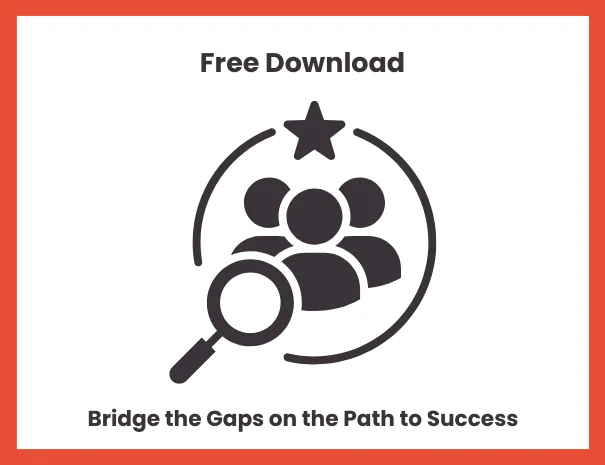Free Talent Gap Analysis Template by Risely
Free Download
Talent Gap Analysis Template
Your toolkit for developing effective leadership

By using this Talent Gap Analysis Template, you will
- Identify skill and competency gaps across roles and teams
- Align talent capabilities with current and future business goals
- Prioritize critical development areas for your workforce
- Build a foundation for effective upskilling and reskilling initiatives
More about the Free Talent Gap Analysis Template
Businesses are transforming rapidly, but talent strategies often lag behind. As roles evolve and new technologies emerge, the skills your team needs today may not be enough for tomorrow. That’s why a clear understanding of your talent gaps is no longer optional—it’s essential.
Risely’s Free Talent Gap Analysis Template helps you take a proactive approach. Instead of reacting to performance issues or missed goals, you’ll be equipped to forecast needs, plan development, and stay ahead of change.
This talent gap analysis template enables you to:
- Map out the core competencies and skills required for each role or team
- Assess where your current workforce stands—objectively and consistently
- Identify the mismatch between available capabilities and strategic goal
- Uncover hidden opportunities for internal mobility, cross-training, or coaching
- Prioritize which gaps are critical to close in the short vs. long term
Frequently Asked Questions
A talent gap analysis is a strategic tool used to identify the gap between the talent your organization currently has and the talent it needs now and in the future. It looks at skills, competencies, roles, and potential to determine where the workforce may fall short in supporting business goals.This analysis helps HR and L&D teams plan for upskilling, hiring, succession planning, and future-proofing the organization.
While they’re closely related, there’s the key difference to note:
- A skill gap analysis focuses on specific abilities—like software expertise, data analysis, or communication. It’s tactical and often used at the team or individual level.
- A talent gap analysis is broader. It includes skills, competencies, experience levels, leadership potential, and more. It looks at the overall talent landscape and how well it aligns with long-term business strategy.
The major steps in a talent gap analysis are:
- Define your future goals: What’s the business aiming to achieve in the next 1–3 years?
- Identify required roles and competencies: What roles, skills, and behaviors will be needed to hit those goals?
- Assess current talent: Use performance data, feedback, and assessments to understand what your workforce looks like today.
- Spot the gaps: Where are you under-resourced? Which critical capabilities are missing or underdeveloped?
- Prioritize and act: Create a plan to address high-impact gaps through training, hiring, or internal mobility.
- Track progress: Reassess regularly as your strategy and workforce evolve.
